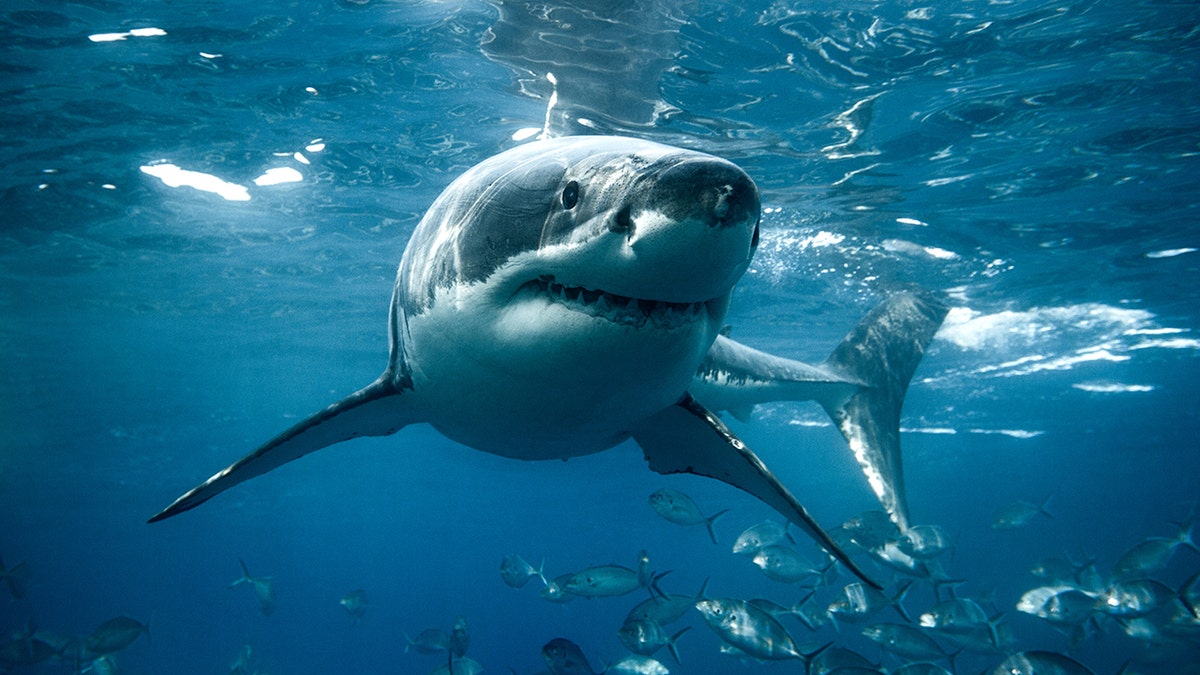Shark expert describes migration patterns of great whites
Capt. Chip Michalove, a shark catcher and tagger, explains why great white sharks are on the move from southern waters. Despite an enormous interest in the sharks, researchers know little about where they mate.
Three great white sharks have appeared off the Atlantic coast in recent days, according to a nonprofit that conducts research on the large predatory fish.
The tagged sharks have "pinged" off the Georgia and South Carolina coasts in the last 24 hours, according to OCEARCH.
Two pinged near Georgia on Tuesday night, WSB-TV reported. A shark named "Bob", which weighs 1,300 pounds was located off the coast of St. Mary’s Island. Another adult great white named "Breton" pinged further out.
A juvenile great white named Anne Bonny, after the female pirate who marauded the Carribean in the 18th century, that weighs 425 pounds pinged near Charleston, South Carolina.
Bob and Breton were both initially tagged in Nova Scotia, Canada, OCEARCH said in a Facebook post. Anne Bonny was tagged in North Carolina.
CARCASS OF PREGNANT GREAT WHITE SHARK WASHES UP ON FLORIDA BEACH

Three great white sharks were pinged this week off the U.S. Southeast coast, researchers said. (iStock)
Capt. Chip Michalove, the owner of Outcast Sport Fishing in South Carolina, told Fox News Digital that many great white sharks typically leave the waters in the Gulf of Mexico and the southeastern U.S. to travel further north as far as Nova Scotia this time of year.
"It's moving days," he said. "Their diet is going to completely change. They're going to go from chasing turtles and dolphins to now they're going to start looking for seals."
Only a small portion of the great whites are tagged, Michalove said. In recent years, researchers have started to figure out sharks' migration routes and patterns because of technology used to monitor where they are in real time.

LeeBeth the shark was first tagged in Hilton Head, S.C. in December. (Chip Michalove)
However, tagging a shark, which can weigh a few thousand pounds, has its challenges, said Michalove, who catches and tags sharks.
"It's tough to put the brakes on a 2,000- or 3,000-pound fish," he said. "Finding them is probably more difficult. Setting up, chumming… and then sort of calm of them down enough on the side of the boat to put two, three or four different tags on them."
"It's tough," he added. "The angle of catching the shark, and then you've got the angle of leaning over the side of the boat and putting on this type of technology without harming the fish and making sure the fish swims away healthy."
Despite the extensive research on other shark species, information on the reproducing patterns of great whites remains minimal, said Michalove.
CLICK HERE TO GET THE FOX NEWS APP
"We don't know where they're mating. We have no idea. Some people think it's off North Carolina. Some people think it's up near Massachusetts. Maybe the open ocean. All we know is the approximate area where they're giving birth.
"This is a fish that you can't put in the aquarium and learn," he added.






















